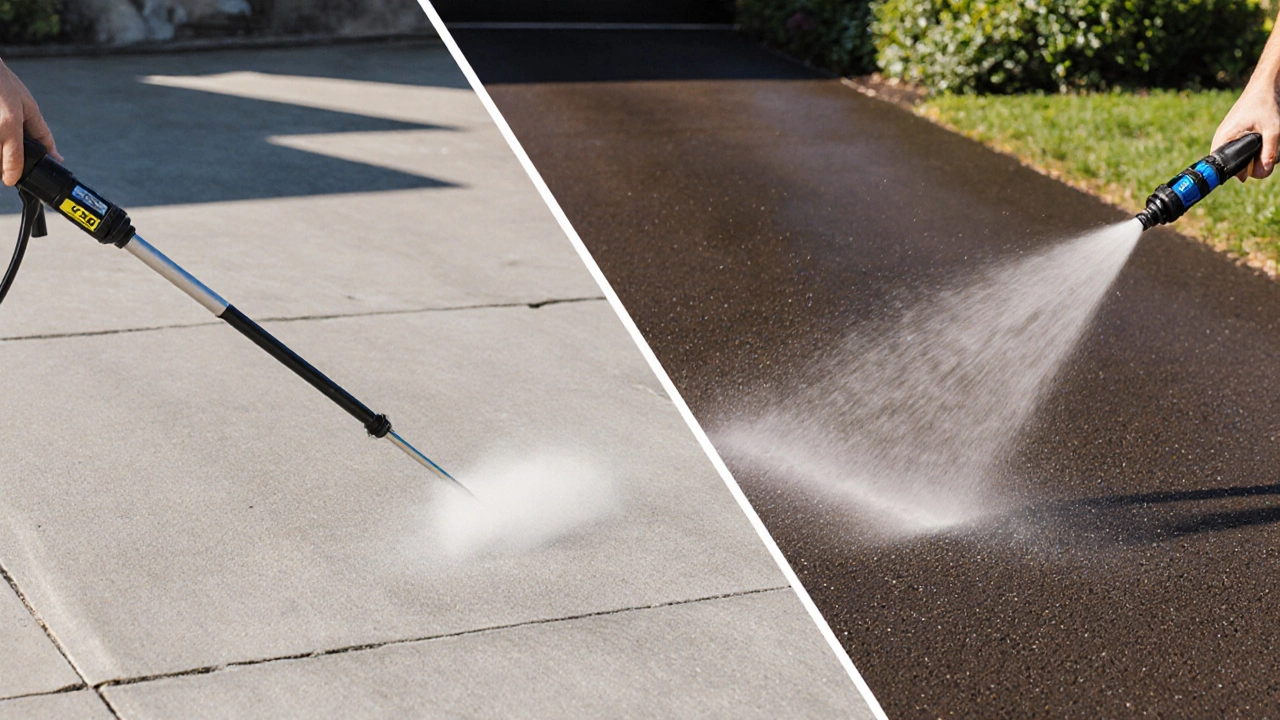Pressure Washer Settings: What You Need to Know
When working with pressure washer settings, the adjustments that control water pressure, temperature, and spray pattern for cleaning tasks. Also known as PSI and GPM settings, it determines how effectively you can remove grime without damaging surfaces. Proper pressure washing preparation, the checklist of safety gear, surface inspection, and area clearing before you start sets the stage for safe, efficient work. Choosing the right water source, whether municipal supply, recycled water, or on‑site tank, influences both performance and environmental impact is another key factor. Finally, eco‑friendly cleaning, using biodegradable detergents and water‑saving techniques, helps you meet sustainability goals while still getting a spotless finish.
Understanding the core attributes of pressure washer settings makes the whole process easier. The main attributes are pressure (measured in PSI), flow rate (GPM), and temperature (cold vs. hot water). High pressure works well on concrete but can gouge painted wood; low pressure with a wide‑angle nozzle is better for delicate siding. The right combination of these attributes, or values, decides whether you’ll strip paint, remove moss, or simply rinse a patio. In practice, most homeowners start with 1500 PSI and 2 GPM for general cleaning, then adjust up or down based on the surface.
How Settings Shape Safety and Efficiency
Safety gear is a must‑have whenever you tweak pressure washer settings. Gloves, goggles, and non‑slip boots protect you from high‑velocity spray and flying debris. The more pressure you apply, the greater the risk of injury, so a pre‑wash safety check becomes essential. This safety step directly influences the setting you choose: if you’re wearing full protection, you can safely bump the PSI a bit higher for stubborn stains. Conversely, if you’re working alone without ideal gear, keeping the pressure modest reduces the chance of accidents.
Water conservation ties into settings as well. Eco‑friendly cleaning encourages using the lowest effective pressure and the shortest spray time to cut water waste. Modern pressure washers often feature flow‑control valves that let you fine‑tune GPM without sacrificing cleaning power. By matching the right nozzle size to the task, you can keep water usage low while still achieving a deep clean. This relationship shows how a conscious choice of water source and flow rate supports sustainable cleaning.
Choosing the proper detergent or cleaning solution is another piece of the puzzle. Some cleaners work best with hot water at higher PSI, while others require cold water and a gentle spray. Knowing which chemical pairs with which setting prevents surface damage and maximises stain removal. For example, an alkaline degreaser combined with 1800 PSI and hot water tackles garage oil stains, whereas a mild eco‑detergent paired with 1200 PSI and cold water is ideal for garden furniture.
All of these factors—pressure, flow, temperature, safety gear, water source, and cleaning agents—create a network of decisions that shape the final result. When you line them up correctly, the job finishes faster, costs less, and leaves the surface looking like new. Below you’ll find a curated list of articles that walk through each step, from prepping your home to picking the right water source and using green cleaners. Dive in for detailed checklists, tool recommendations, and real‑world tips that take the guesswork out of setting up your pressure washer.

Driveway Pressure Washing: How Much PSI Do You Need?
Find out the exact PSI needed for concrete and asphalt driveways, learn how to pick the right pressure washer, adjust settings for tough stains, and avoid surface damage.
Read More